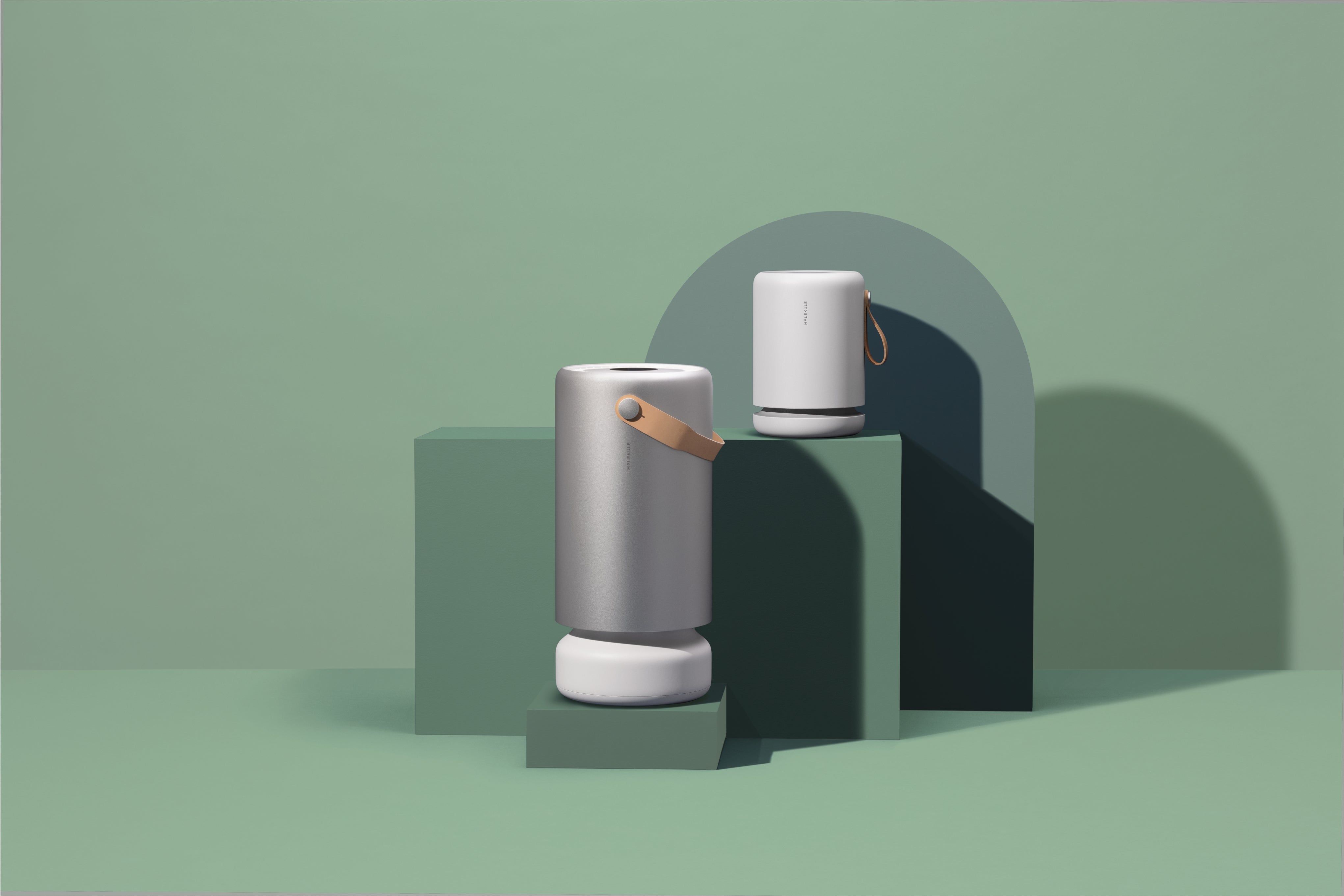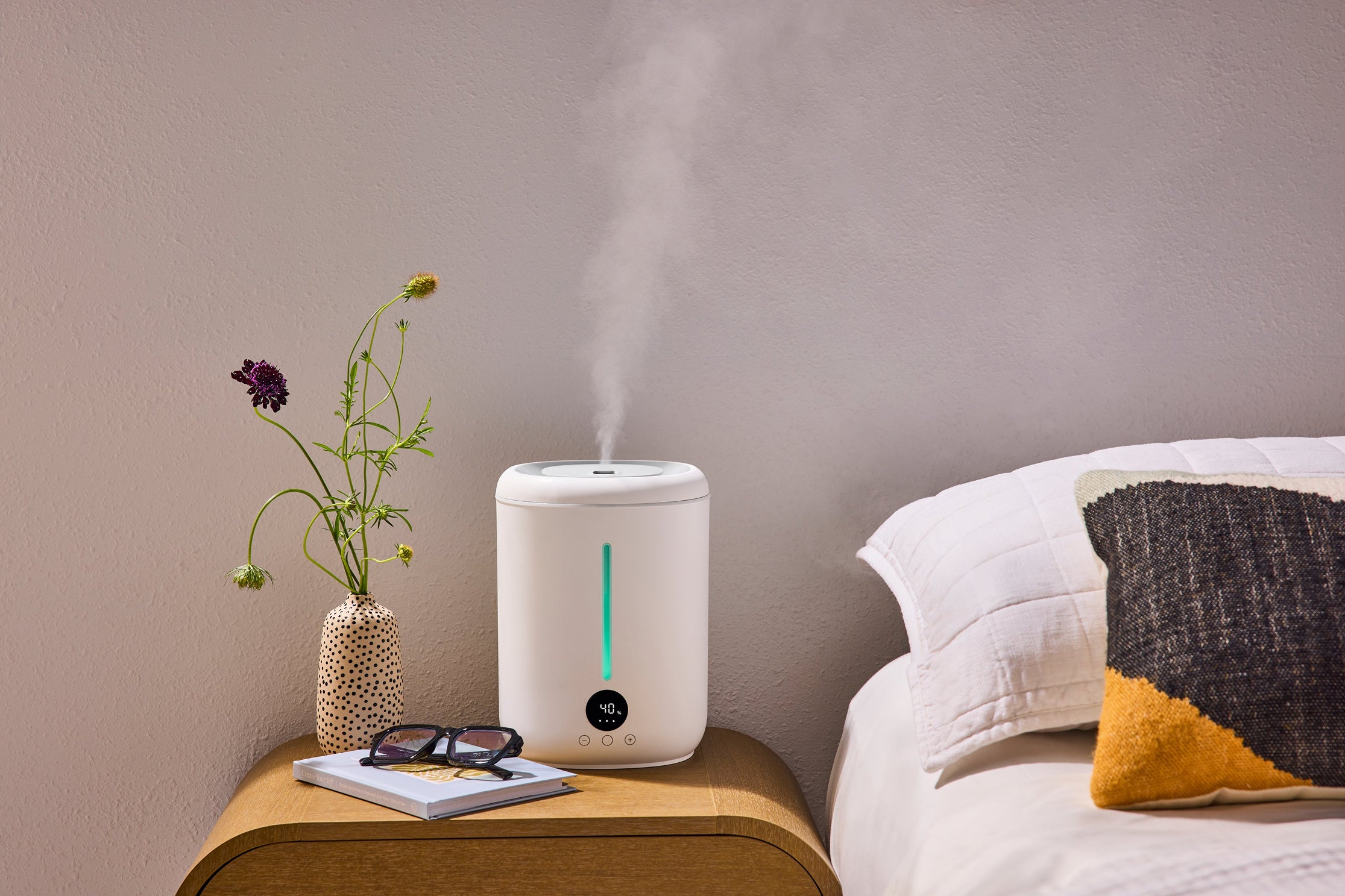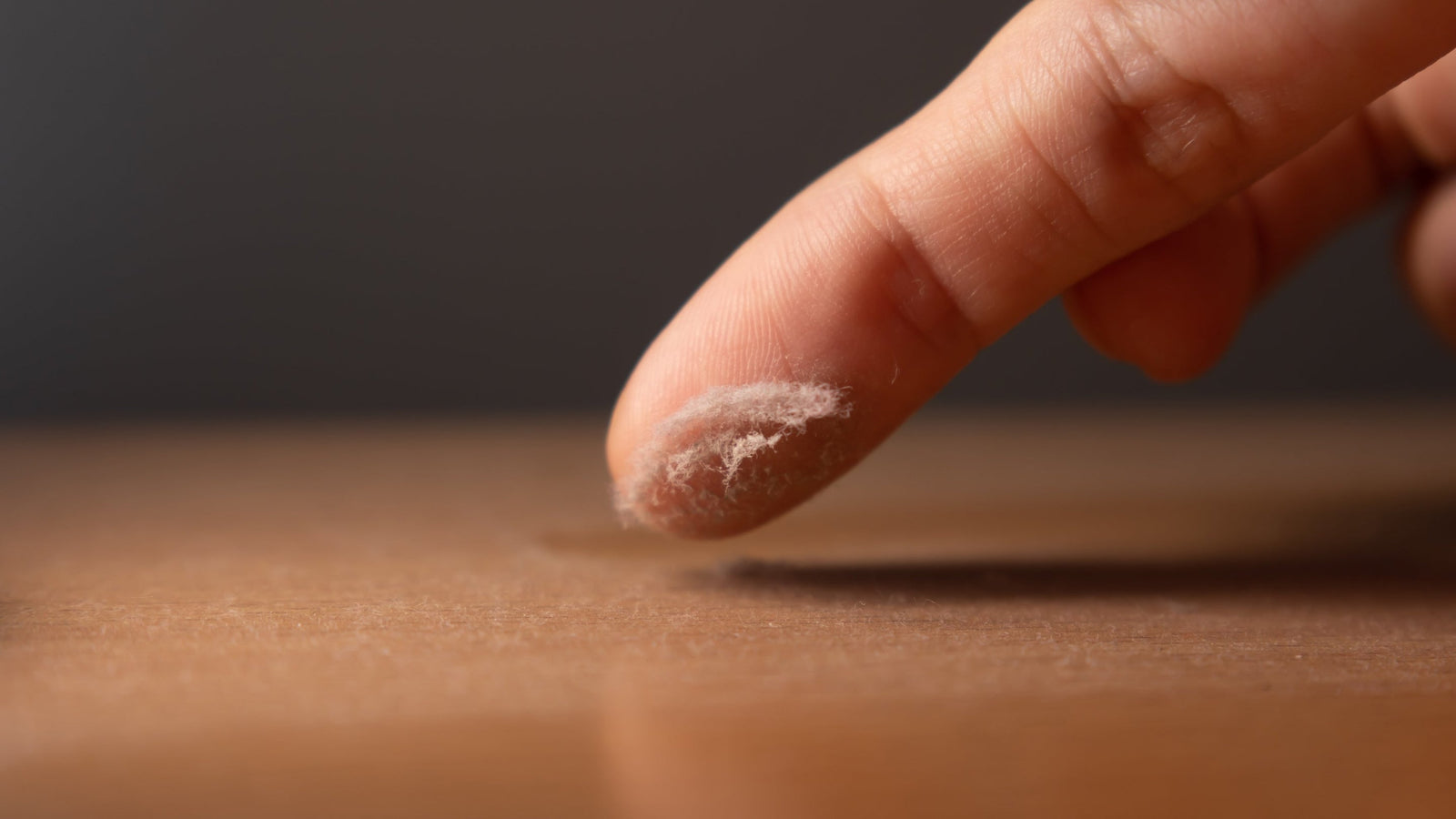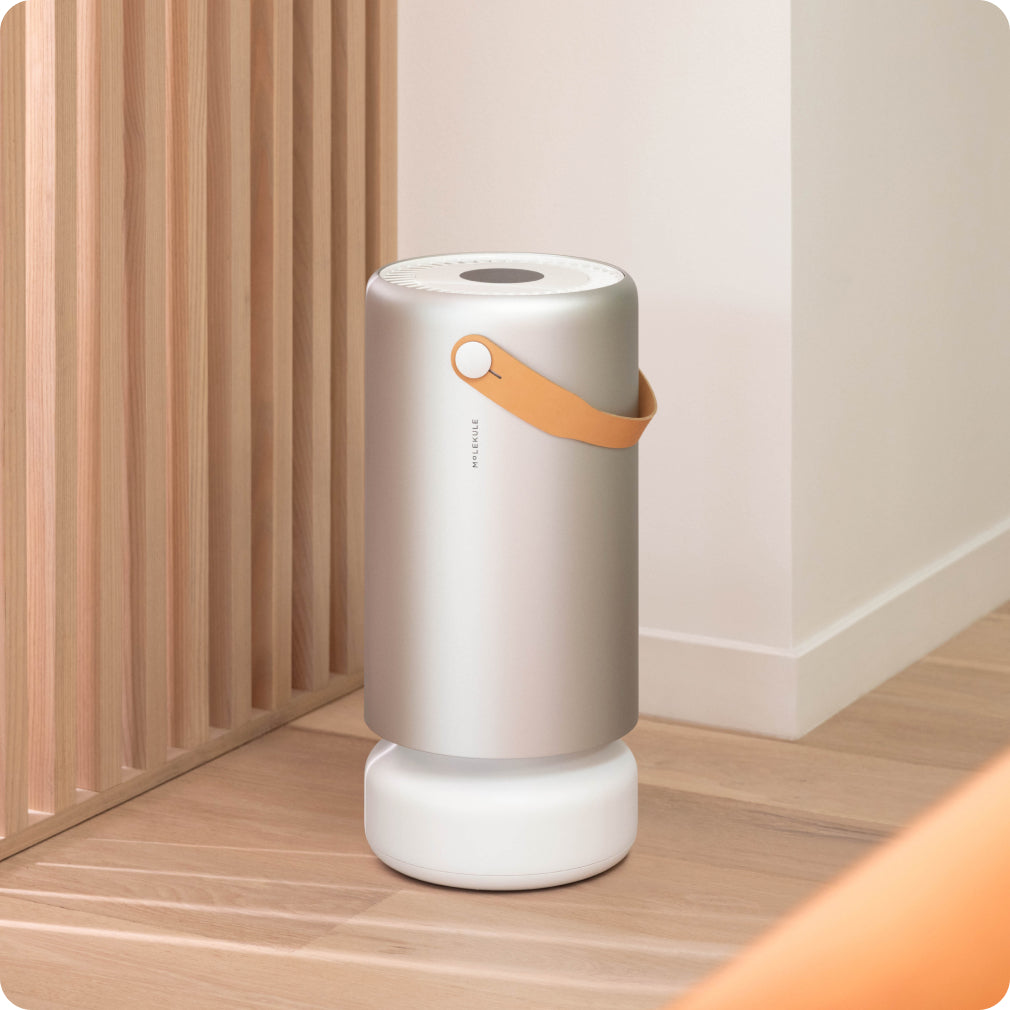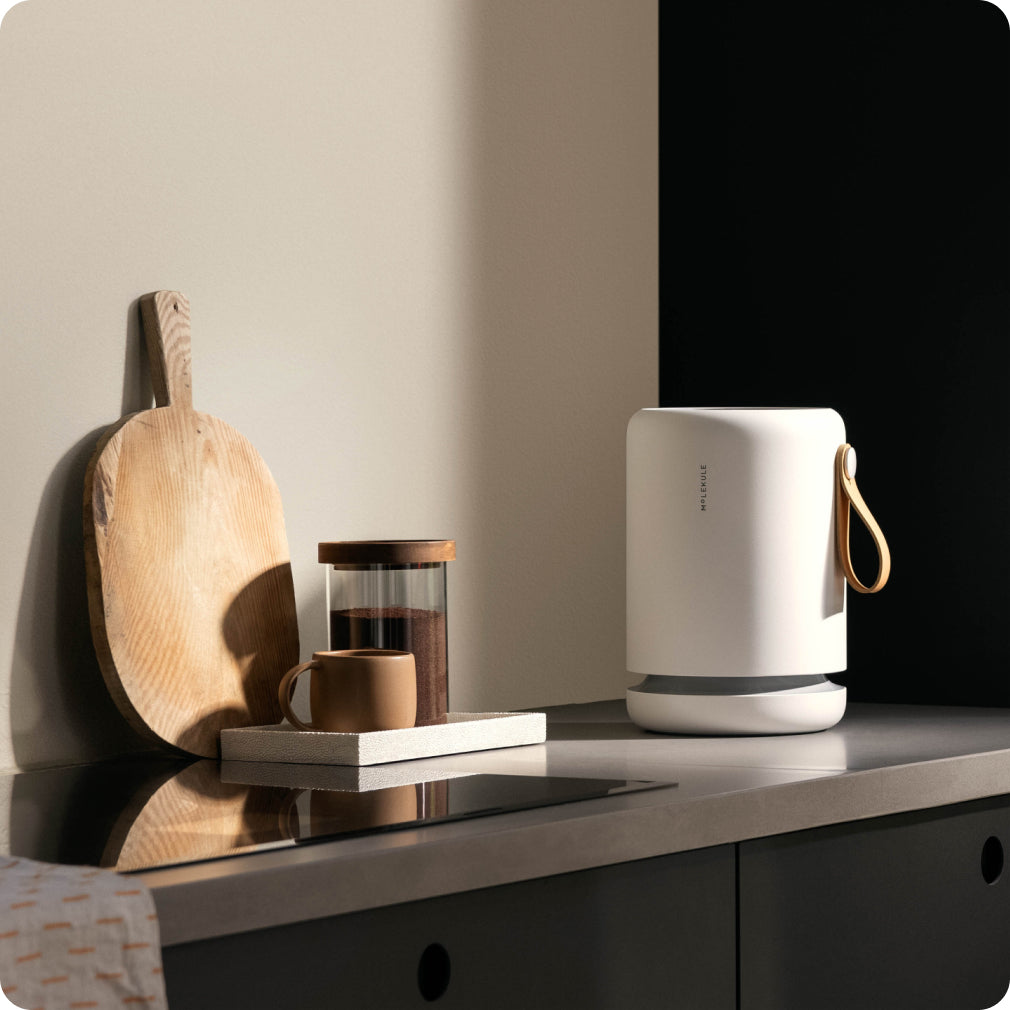If you’ve ever wiped down your furniture only to see dust reappear a day later, you know how frustrating the cycle can be. Dust doesn’t just make surfaces look dull. It clings to wood through static and embeds deep into fabrics, making it harder to keep your home feeling fresh.
The good news? With the right mix of smart cleaning habits, surface treatments, and advanced air purifiers, you can stop dust from settling in the first place and keep your furniture looking cleaner for longer.
Key Takeaways
-
Static Reduction: Use anti-static furniture polish and dryer sheets to prevent dust attraction on wood surfaces.
-
Surface Protection: Apply furniture wax or oil-based treatments to create protective barriers against dust accumulation.
-
Air Quality Control: Install molecular-level air purification to capture particles before they settle on furniture.
-
Natural Solutions: DIY vinegar and olive oil sprays provide cost-effective dust repellent properties.
-
Preventive Cleaning: Weekly microfiber dusting and strategic placement reduce maintenance requirements.
Understanding Why Dust Accumulates on Furniture
Dust builds up on furniture largely because of static electricity, which makes wood surfaces especially prone to attracting airborne particles like skin cells, pet dander, pollen, and fabric fibers. Lacquered finishes often collect more dust, while oil-based finishes provide some resistance. Upholstered pieces add another challenge, as fabric fibers trap and hold particles over time.
How quickly dust accumulates depends on factors like indoor air quality, humidity, and even how often a space is used. Understanding natural approaches to air quality, such as keeping low allergen plants, shows how these conditions affect particle movement and settling, highlighting why surface cleaning alone rarely keeps furniture dust-free.
12 Expert Solutions for Preventing Dust Buildup on Furniture
Keeping furniture dust-free takes more than an occasional wipe-down. These expert-backed strategies combine surface treatments, smart cleaning habits, and air quality improvements to prevent buildup and keep your home looking cleaner for longer.
1. Anti-Static Furniture Polish Application
Anti-static polishes form a protective barrier that neutralizes static charges, making surfaces less attractive to airborne particles while enhancing shine. Apply with a microfiber cloth instead of spraying directly to avoid streaking, and pay extra attention to high-use spots like desktops and chair arms. Reapply every few weeks to maintain effectiveness, and select silicone-free formulas tailored to your furniture type to prevent residue that can actually attract more dust over time.
2. DIY Dust-Repellent Spray Solutions
This homemade dust-repellent spray costs significantly less than commercial products while providing effective anti-static properties for 2-4 weeks per application. The vinegar breaks down existing grime and eliminates bacterial buildup, while olive oil creates a protective coating that helps particles slide off surfaces rather than adhering.
|
Ingredient |
Amount |
Purpose |
|
White vinegar |
1/4 cup |
Breaks down grime, reduces static |
|
Olive oil |
2 tablespoons |
Creates protective barrier, traps particles |
|
Water |
2 cups |
Base solution for application |
|
Dish soap |
3 drops |
Emulsifies oils for even distribution |
|
Essential oil (optional) |
10-20 drops |
Provides pleasant scent |
Apply the solution to a microfiber cloth before wiping furniture to prevent oversaturation. Test on inconspicuous areas first to ensure compatibility with your furniture finish.
3. Strategic Furniture Wax Protection
Furniture wax creates a durable barrier that reduces static and prevents dust from penetrating wood grain. Natural options like carnauba or beeswax can protect for 3–6 months, extending time between cleanings. Apply thin coats along the grain, let set for 15–20 minutes, then buff to a sheen—focusing on horizontal surfaces where dust collects most. Always test first on antiques or delicate finishes, and use specialized products for synthetic materials.
4. Dryer Sheet Dust Prevention Technique
Dryer sheets help reduce static buildup on furniture, leaving behind a thin coating that makes surfaces less likely to attract dust. They’re especially effective on baseboards, lampshades, and picture frames that gather particles quickly due to airflow. Simply wipe surfaces after dusting, and repeat every 2–3 weeks. To avoid strong scents, choose unscented sheets, or mix a small amount of fabric softener with water in a spray bottle for a more economical, controlled application.
5. Humidity Control for Static Reduction
Maintaining indoor humidity around 40–50% helps reduce static that pulls dust onto furniture. When levels drop below 30%, static charges rise, while humidity above 60% can encourage mold and other moisture issues. Use humidifiers during dry winter months, check conditions with digital hygrometers, and consider whole-house systems for consistent control. Proper humidity management complements other dust-prevention strategies to keep surfaces cleaner. For example, air purifiers can help with mold and dust removal.
6. Microfiber Cloth Maintenance Routines
Microfiber cloths are one of the most effective tools for dust prevention, thanks to their ability to trap particles through electrostatic attraction rather than just pushing them around. Create a routine to maximize their benefits: use a dry cloth for daily quick wipes, a slightly damp cloth with a dust-repellent solution for weekly deep cleaning, and pair microfiber with anti-static polish monthly for added protection.
Every season, remove items from furniture for a full clean. Wash cloths regularly without fabric softener, and replace them once they lose their ability to hold dust effectively.
7. Advanced Air Purification Systems
Professional-grade air purifiers stop dust before it ever settles by capturing particles directly from the air, reducing the need for constant surface cleaning. Unlike traditional methods that only treat dust after it lands, continuous air cleaning maintains cleaner environments and protects furniture finishes.
Look for models with molecular destruction technology that eliminates contaminants instead of just trapping them. Molekule’s PECO technology, for example, breaks dust particles down at the molecular level, preventing re-release during filter changes. Place units strategically in rooms with the highest dust buildup and run them consistently for reliable, whole-room protection.
8. Furniture Covers and Protection Strategies
Furniture covers provide a simple but highly effective way to block dust, especially during storage, long trips, or in rooms that see little use. Breathable fabric covers are best, since they prevent both dust infiltration and moisture buildup that can damage wood or fabric. Remove covers weekly for a short airing and to check for hidden moisture.
For everyday use, washable slipcovers are a practical option. They can be laundered regularly to keep dust and allergens from embedding into upholstery. Both approaches protect finishes, extend furniture life, and cut down on time spent deep cleaning.
9. Source Control and Environmental Management
Eliminating dust sources reduces furniture accumulation rates more effectively than increasing cleaning frequency alone. Address outdoor infiltration through improved door and window sealing, implement no-shoes policies to prevent tracked particles, and maintain HVAC systems to minimize dust circulation.
Regular HVAC filter replacement prevents dust redistribution throughout homes. Upgrade to high-efficiency filters or add air purifiers for the whole home that work continuously to maintain clean air conditions.
Pet grooming schedules and bedding washing routines directly impact furniture dust levels. Managing pet allergens naturally reduces one of the largest sources of household dust accumulation.
10. Decluttering for Dust Reduction
Minimal surface items mean fewer objects collecting dust and fewer areas requiring regular maintenance. Remove unnecessary decorative pieces, consolidate remaining items into closed storage solutions, and choose furniture with smooth, easy-to-clean surfaces over intricate designs that trap particles.
Each additional item on furniture surfaces multiplies cleaning requirements while providing more areas for dust accumulation. Strategic decluttering can reduce cleaning time by 50% or more while improving overall dust control effectiveness.
11. Strategic Furniture Placement
Position furniture away from high-dust areas like heating vents, windows, and high-traffic pathways where particle circulation rates increase accumulation speeds. Central room placement reduces dust exposure compared to wall positions where particles settle from air circulation patterns.
Elevate furniture on legs rather than placing pieces directly on floors to improve air circulation underneath and prevent dust bunny formation. This positioning also facilitates easier cleaning around and under furniture pieces during maintenance sessions.
12. Professional-Grade Air Purification
Air purification is one of the most effective long-term strategies for preventing dust buildup, since it removes particles from circulation before they ever reach furniture surfaces. High-quality air purifiers have numerous benefits. They run continuously to maintain cleaner air, reducing the need for constant dusting while also improving your overall indoor air quality.
Advanced systems go beyond basic HEPA filtration by not only trapping particles but breaking them down at the molecular level, preventing re-release during filter changes. Molekule’s PECO technology is one example, available in larger models like the Molekule Air Pro for whole rooms and its mini air purifiers like the Air Mini+ for bedrooms.
The Science Behind Effective Dust Prevention
Dust buildup isn’t random. It’s driven by a mix of static electricity, particle size, and airflow. Static is the main culprit, especially on dry days or synthetic finishes, pulling airborne particles onto surfaces. While surface cleaning removes visible buildup, dust begins settling again almost immediately unless the environment changes.
Particle size also matters: larger particles drop quickly, while ultrafine ones (0.1–0.3 microns) can stay suspended for long periods, eventually embedding deep into fabrics or wood grain. Airflow patterns further influence where dust lands, which is why improving circulation and using air purification are key to keeping furniture cleaner longer.
Professional Maintenance vs. DIY Solutions
Professional furniture maintenance services provide deep cleaning and protection treatments that extend beyond typical household capabilities, particularly for valuable antique pieces or extensive furniture collections. However, professional services address existing dust problems rather than preventing future accumulation.
DIY solutions offer cost-effective prevention when applied consistently, with homemade dust-repellent sprays providing comparable results to commercial products at a fraction of the cost. The key lies in consistent application and combining multiple prevention strategies for comprehensive protection.
Combining professional deep cleaning with ongoing DIY prevention and molecular air purification creates the most effective approach. Initial professional treatment removes embedded dust and applies protective finishes, while continuous air purification prevents reaccumulation between maintenance sessions.
Frequently Asked Questions
What is the most effective way to prevent dust buildup on wooden furniture?
Combine anti-static furniture polish application with molecular air purification for comprehensive protection. Apply quality anti-static products monthly while maintaining continuous air purification to eliminate particles before they settle on surfaces.
How often should I apply dust-repellent treatments to furniture?
DIY vinegar-olive oil solutions last 2-4 weeks, commercial anti-static polishes provide protection for 3-6 weeks, and quality furniture wax treatments protect for 3-6 months. Reapplication frequency depends on environmental conditions and dust source levels.
Can air purifiers really prevent dust from settling on furniture?
Yes, molecular air purification technology destroys particles before they settle, significantly reducing furniture dust accumulation. Molekule's PECO technology has been proven to eliminate 95% of airborne allergens, preventing surface contamination throughout rooms.
What's the difference between anti-static polish and regular furniture polish?
Anti-static formulations contain polymers that neutralize electrical charges attracting dust, while regular polish primarily provides shine without dust prevention properties. Some traditional polishes actually increase dust attraction through residue buildup over time.
Are DIY dust-repellent sprays as effective as commercial products?
Properly formulated DIY solutions using vinegar and oil provide comparable anti-static properties to commercial products at significantly lower costs. The key is correct ratios and consistent application every 2-4 weeks for optimal effectiveness.
Which furniture types benefit most from dust prevention treatments?
Wood furniture with lacquered finishes shows the greatest improvement from anti-static treatments, while upholstered pieces benefit most from air purification that prevents particle infiltration into fabric fibers. Molekule air purifiers protect all furniture types simultaneously through comprehensive air cleaning.
